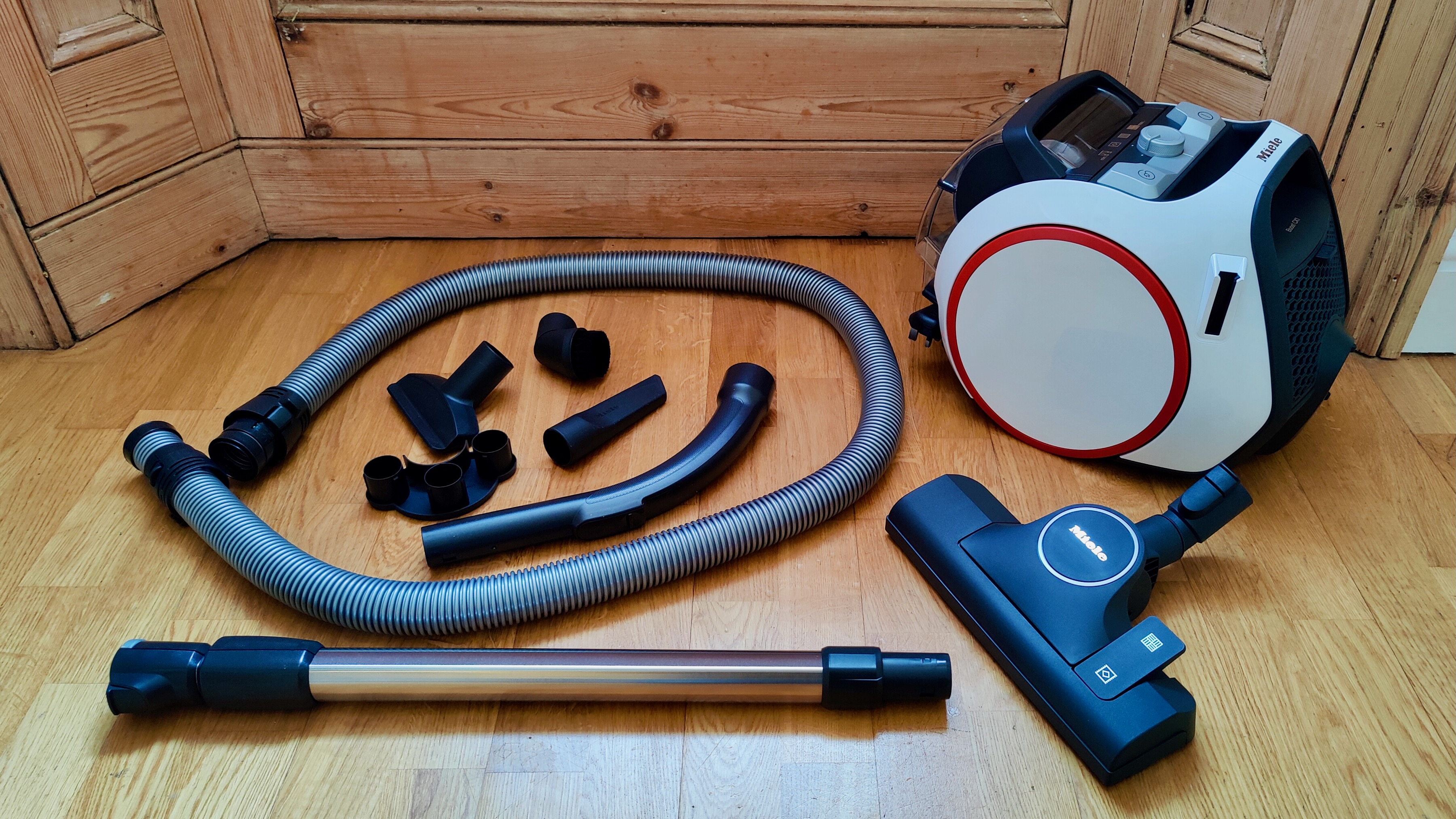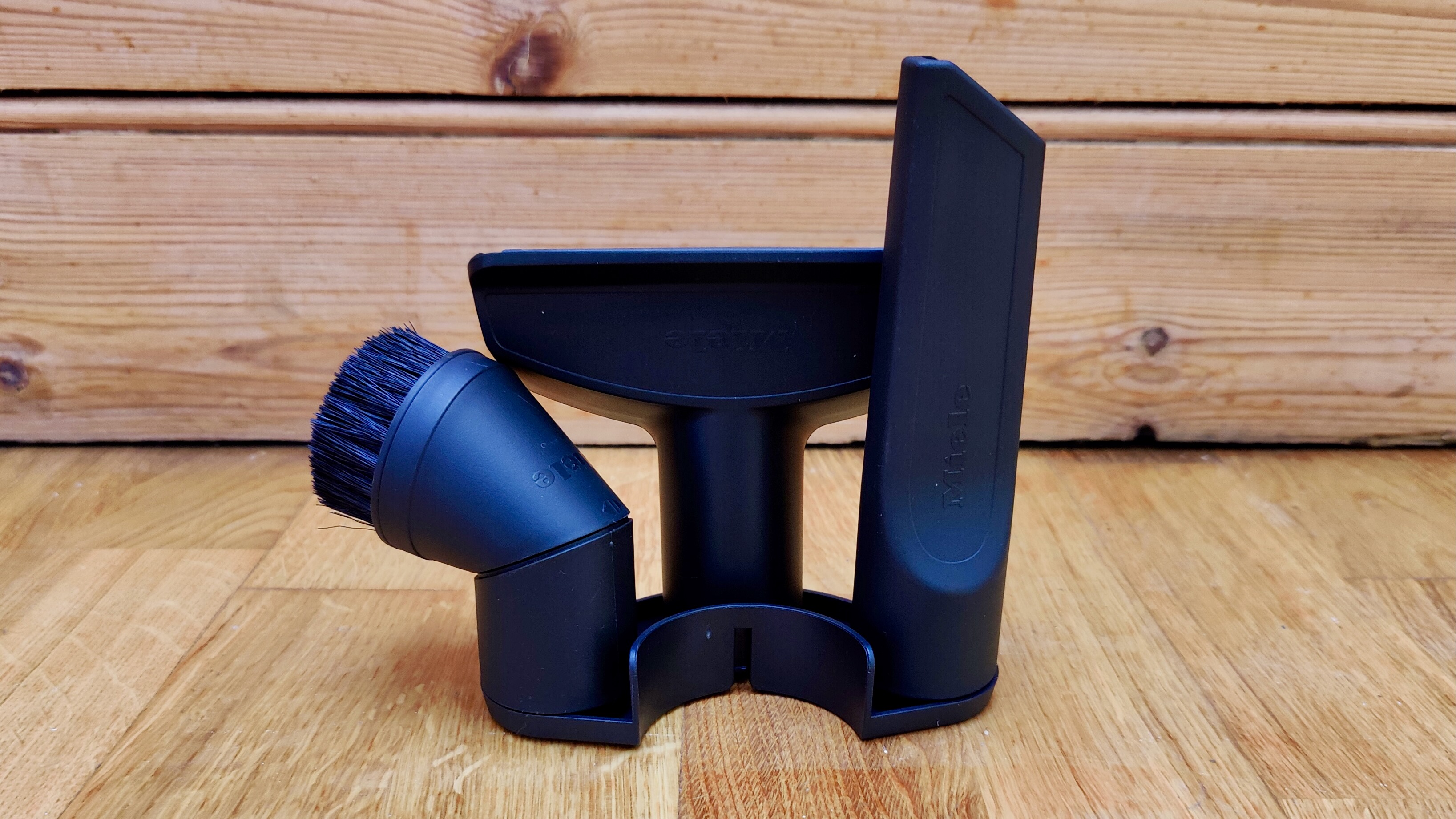Miele Boost CX1 review: compact vacuum cleaner doesn't compromise on power
The stylish Miele Boost CX1 cylinder vacuum cleaner has suction power to rival the big boys


The Miele Boost CX1 is an elegantly designed cylinder vacuum cleaner which packs plenty of suction power despite its diminutive size. The compact design makes it ideal for smaller spaces, although larger homes may benefit from spending a little more money to get the equally brilliant Miele Blizzard.
-
+
Compact form factor is ideal for small spaces
-
+
Attractive design
-
+
Superior suction
-
-
Smaller bin means more frequent emptying is required
-
-
Annoying accessory storage system
Why you can trust T3

Here's our Miele Boost CX1 review in a more compact form: this shrunken cylinder vac may look cute, but it's a brute! Boost CX1 is Miele's smallest ever bagless cylinder vacuum cleaner with a footprint of just 40cm x 28cm and a height of 28cm. It weighs 5.8kg, features an 890W motor and has a cable length of 6.5m which gives a 10-metre operating radius when you factor in the length of the hose and suction tube. In a nod to sustainability, Miele says the appliance has been tested to perform for the equivalent of 20 years’ use and that it has been designed to be easily repaired rather than replaced.
This is the third Miele vacuum cleaner I’ve used. I started out with a Miele bagged cylinder vac, the Classic C1, about six years ago. I then moved on to Miele’s first bagless vac, the excellent Miele Blizzard CX1, which was released in 2017 and is still on sale now, so I was interested to see how this smaller Boost CX1 performed. Overall, I was impressed. I'd say if you're a lover of cylinder vacuum cleaners, but you're short on space, this is one of the best vacuum cleaners you can buy.
Miele Boost CX1: price and release date
The Miele Boost CX1 PowerLine is priced at £269 and was released in March 2022. There are two other models in the range, detailed below. In the US the Boost CX1 PowerLine tends to retail for around $449. In Australia its RRP seems to be AU$599.

In the box you get the vacuum cleaner, the floorhead, the flexible hose and suction tubes, three attachments with a clip to hold them, a quick start guide and a longer instruction manual
Miele Boost CX1: range overview
There are three models in the Miele Boost CX1 range. The entry level model is the Boost CX1 PowerLine, with a RRP of £269. It comes with three attachments: dusting brush, upholstery nozzle and crevice nozzle. This is the model that I am testing in this Miele Boost CX1 review.
Next up is the Boost CX1 Hard Floor Parquet which features a flexible ‘Parquet Twister’ floor head for hard, wood or laminate floors, as well as a dusting brush, upholstery nozzle and crevice tool. This model also features a multi-stage HEPA air filtration system and has an RRP of £329.
Finally, there’s the Boost CX1 Cat & Dog PowerLine which features Miele’s TurboBrush floor head which is designed to pick up embedded pet hair. It also comes with a multi-stage HEPA air filtration system and that trio of dusting brush, upholstery nozzle and crevice nozzle attachments. The RRP of this model is £369.
Miele Boost CX1: Design and features
I think that Dyson has had the edge on Miele when it comes to vacuum cleaner design, with the German brand traditionally preferring to focus on functionality over looks, but the Boost CX1 sees Miele up its style game. It comes in shiny plastic with a clear dust collection bin and accent colours around the rims of the two large wheels. There are also additional small swivel castors which enable the Boost to turn on its axis. The construction of the Boost feels pleasingly robust.
Get all the latest news, reviews, deals and buying guides on gorgeous tech, home and active products from the T3 experts

If you've used a Miele vac before you'll recognise these controls
On top of the Boost CX1 is a control unit you’ll be familiar with if you’ve owned other Miele cylinder vacuum cleaners: there’s a power button, cord retract button and a rotary dial which lets you adjust the suction through four different levels, marked as curtains, rugs, carpets and hard floors. There’s also a handle on the top of the cleaner to remove the dust container.
On the side of the unit there’s a slot where you can slide the floorhead to park it, and the attached suction tube, in an upright position against the CX1 when you’re taking a break.

You can park the suction tube and floorhead in a clip on the side of the vacuum when not in use
Inside the Boost is an exhaust filter, which Miele says should be replaced once a year. On the rear side of the dust container there’s a fine dust filter and filter mat which can be cleaned with water and the supplied cleaning brush. Miele recommends that these parts are cleaned once a month. There is also a removable pre-filter and filter frame which are accessible from the side of the dust container, and these should be cleaned as required.

The exhaust filter is accessed from the front of the vacuum via a removable panel
Miele Boost CX1: Performance
Unboxing the appliance, I was surprised by how small the CX1 is, since the box itself is quite large. Also in the box, you’ll find the floor attachment, the dusting brush, upholstery nozzle and crevice attachments, the flexible hose, the metal suction tube and an accessories clip.
This accessory clip can be attached to the part of the vacuum cleaner where the hose meets the wand and while that’s fine for when the appliance is not in use I found it annoying when I was using the cleaner, as that’s precisely the area where my hand was. I would have preferred a storage solution on the body of the vacuum cleaner.

The Miele Boost CX1 comes with three accessories: dusting brush, upholstery nozzle and crevice nozzle which fit onto this semi-circular clip

The accessory holder can be clipped onto the join between the hose and the vacuum cleaner wand, where it'll annoy you – but it can be removed again
The wheels make the Boost easy to manoeuvre and it didn’t tip over at all when I was using it. Using a decibel meter on my phone, the Boost came out as marginally louder than the larger Miele Blizzard, but only by a couple of decibels. In use, I didn’t notice any difference in suction level between the two models – probably explained by the fact that both machines feature 890W motors.
Emptying the vacuum is easy – simply lift the dust container out by its handle and press a small grey button and the bottom of the dust container falls open – preferably over a bin. The filters are also easy to access from here.

The dust container is removed by the handle on the top. You can also access the fine dust filter, filter mat and cleaning brush from the back of the dust container
While the Miele Blizzard comes with ‘Comfort Cable Rewind’, which means that it just takes a single press of the rewind button with a foot for the cable to fully retract, the Boost requires you to hold onto the button until the cable has retracted into the unit. It’s no great hardship since the cable retracts so quickly.
Miele Boost CX1: Verdict
I really like the design of the Boost and that it’s light and manoeuvrable. In use, it has plenty of suction to get wooden floors and carpets clean. What I’m not a fan of is the clip that holds the three cleaning accessories as it’s situated right at the point where my hand grips the vacuum wand. Of course, you don’t have to attach the clip, but then you won’t have the attachments easily to hand.
Miele Boost CX1: Also consider
If you have pets, you might want to go for the more expensive Boost CX1 Cat & Dog PowerLine, which is finished in ‘Obsidian black’ rather than ‘Lotus white’ and comes with a powered brush, the Turbobrush STB 305-3, and a multi-stage HEPA air filtration system.
Alternatively, you could opt for Miele's other bagless cylinder vacuum cleaner range, the Miele Blizzard, which features twice as much capacity, and an extra metre of cable length and has a much more sensible on-body storage system for the attachments. The downside is that it weighs 2.9kg more than the Boost CX1 (8.7kg vs 5.8kg).
The other obvious option, if you want something compact, is to go for something from our best cordless vacuum cleaner list. However, the power of the Boost CX1 is probably greater than any cordless, and it also won't ever run out of battery.

How the body of the Boost CX1 compares with the larger Blizzard CX1
The Blizzard CX1 comes in three models: the Blizzard CX1 PowerLine, the Blizzard CX1 Cat & Dog Pro PowerLine, and the Blizzard CX1 Total Solution PowerLine. If you compare the entry level models of the Boost and the Blizzard, you’re looking at an additional £70 to go from the smaller Boost to the larger Blizzard. You can compare Boost vs Blizzard specs at Miele’s website.

Paul Douglas is Global Digital Editorial Strategy Director at Future and has worked in publishing for over 25 years. He worked in print for over 10 years on various computing titles including .net magazine and the Official Windows Magazine before moving to TechRadar.com in 2008, eventually becoming Global Editor-in-Chief for the brand, overseeing teams in the US, UK and Australia. Following that, Paul has been Global Editor-in-Chief of BikeRadar and T3 (not at the same time) and later Content Director working on T3, TechRadar and Tom's Guide. In 2021, Paul also worked on the launches of FitandWell.com and PetsRadar.